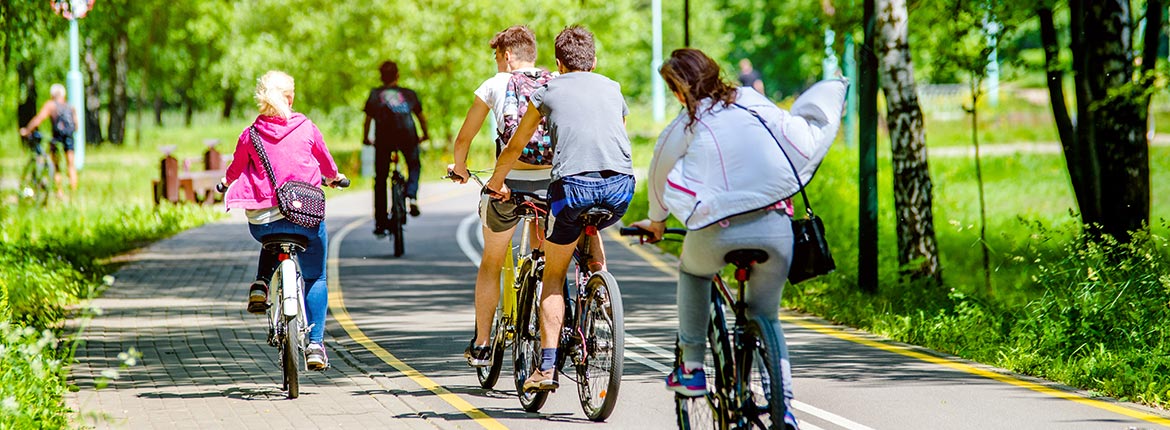
The worldwide pandemic of Covid-19 has had a profound effect on the way we live with social distancing and restrictions on movement resulting in a complete overhaul of how we stay physically active and well. Following the initial temporary closures of sporting facilities and leisure centers, many people found alternative ways of keeping active and adapting to the “new normal” environment. However, for some people staying at home for prolonged periods of time has posed a significant challenge in keeping up with their regular levels of activity.
Research from Sport England has shown that people have turned to alternative ways of keeping active during the pandemic, particularly with cycling and walking to keep active outdoors. In one survey, 63% of people across the first six weeks of lockdown stated that they felt exercise was also important for their mental health. This is a promising statistic as it has long been recognized that sedentary behaviour and low levels of physical activity can have negative effects on our health, well-being and quality of life.
In England, the majority of outdoor sport facilities have now reopen, if those responsible for them feel ready to do so safely. Indoor facilities such as gyms and pools can also reopen, provided operators follow government guidelines. While social gatherings of more than six people have been curtailed in England from 14th September, organized sports and activities that have been through return to play protocols can continue, as can organized outdoor sports and physical activity events such as park runs. Public Health England has specified that all recreational clubs must develop a written COVID-19 plan and risk assessment prior to activity.
However, the “lockdown” period has had a significant effect on the way people have undertaken sport in terms of the type of physical activity, as well as the volume and intensity of training. In our practice, we are seeing a growing number of people with overuse injuries as a result of increasing their volume of sport rapidly e.g. with running or cycling, as well as more acute injuries from people returning to sport from a relative sedentary period.
One group of people are those that are normally very physically active and have seized the opportunity to increase activities such as running training or cycling over the summer months whilst spending more time at home. In some cases, this can be at the detriment of their “normal” level of conditioning that would usually be undertaken in a gym. As a result, with an increased load and intensity of training, in our clinic we are seeing people that have developed symptoms with tendons (tendinopathies) and bone stress injuries. Both conditions are associated with pain and dysfunction and if left untreated, can cause considerable time loss from sporting activities.

Conversely, another group of people are those that are only just returning to sporting activities or taking up new challenges. A period of sedentary behavior can have negative consequences of reduced muscle strength, flexibility, suboptimal sport specific conditioning and poor cardiovascular fitness- all of which may contribute to an increased risk of future injury.
It is therefore important that over the forthcoming winter months, whilst we embrace physical activities and sport, we must also be mindful of implementing changes gradually. In essence, we should incorporate starting slowly, building up and pacing with goal setting week by week. It is often helpful to compare your physical activities during “lockdown” to your previous “normal” training- what have been the gaps? Have you a clear plan for sport specific conditioning and are you carrying any “niggles”? Although most sports people are just delighted to get back to some form of training, a clear plan will prevent injuries and keep you well.
Whether you are a weekend a warrior or someone that has taken this opportunity to become active, listen to your body, incorporate strength, agility, sports specific training drills and importantly, implement recovery strategies to augment adaptation in your bones and muscles. Alongside this, it is equally important to consider your nutrition and adequate fueling strategies with your training and not to forget Vitamin D supplementation as we enter the winter months.
The World Health Organization (WHO) recommends 150 minutes of moderate-intensity or 75 minutes of vigorous-intensity physical activity per week, or a combination of both. These recommendations can still be achieved even at home, with no special equipment and with limited space.
The current crisis could potentially be a window of opportunity, a moment of learning to initiate long-term activity for us all.
Train well, train safely and enjoy all the benefits that physical activity and sport has to offer over the coming months.
